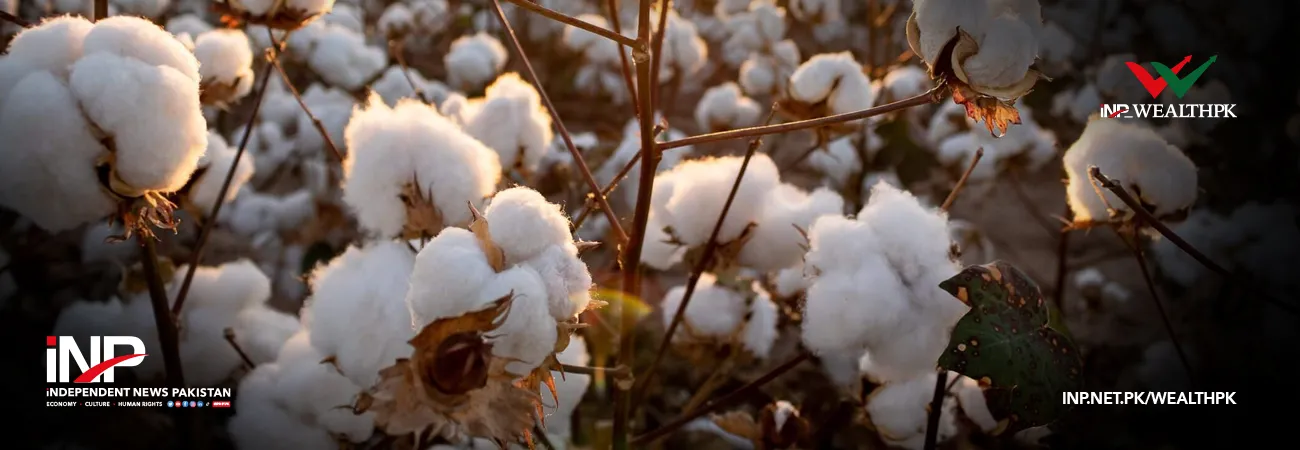INP-WealthPk
Amir Khan
Pakistan's spinning industry has experienced a dramatic shift in FY23-24, with the cotton import bill plunging to a record-breaking low of $2.4 billion. This remarkable achievement came amidst challenging economic circumstances, including strict central bank restrictions imposed due to a foreign exchange liquidity crisis. However, the economic landscape for FY23-24 offers a stark contrast. While signs of macroeconomic recovery emerge, the average borrowing cost for the entire year is expected to remain significantly above 15%, said Muhammad Sualeh Ahmad Faruqui, Secretary of Commerce, while talking to WealthPK. Additionally, discontinuation of concessionary financing schemes and tightening of subsidized energy tariffs, potentially permanently add to the industry's challenges. The ongoing financial year (2023-24) projections indicate that cotton imports may not even secure a spot in the country's top 10 import categories. He added that over the past three fiscal years, the national cotton import bill averaged $2.25 billion annually, positioning it as the fifth-largest component of Pakistan's goods import bill.
Notably, it claimed the top spot outside the realms of fossil fuels (crude oil, gas, coal) and palm oil. “The recent revival in domestic cotton production, following last year's devastating monsoon floods, suggests a positive trend. Yet, caution is advised against overselling this 'turnaround' story,” he added. He pointed out, “Despite the recovery, the current estimates for cotton output in the marketing year fall a million bales below the average production from FY18 to FY22 (excluding the flood year FY23) and align precisely with the reported output for FY22.” He further said, “The exuberance during the early months of the cotton harvest, as previously highlighted in this space, might have been overstated but remains largely unacknowledged by the broader industry.” The global cotton market also presents a contrasting picture. The prices have plummeted, anticipated to average between 80 and 90 cents for the year.
This, coupled with concerns about a potential recession in key export destinations, may lead to cautious downstream order placement and buying for the remainder of the fiscal year. These contrasting economic trends paint an uncertain future for Pakistan's spinning industry. While the unprecedentedly low import bill of FY23-24 offered a glimmer of hope, the combination of high borrowing costs, tighter regulations, and a volatile global market creates a challenging environment for the industry's sustained growth. “If the expected cotton production for the ongoing year mirrors that of FY21-22, it stands to reason that the demand for imported cotton will also hover around the same range. In FY21-22, Pakistan imported 4.5 million bales (170kg) of cotton, contributing to a total domestic supply (domestic output + imports) of 13 million bales,” Faruqui highlighted. The textile industry benefited from concessionary financing schemes, subsidized energy tariffs, and a borrowing rate within the single-digit range for much of the year. The global cotton prices soared to an 11-year peak, averaging around 130 cents per pound, a 60 percent increase from the previous year.
This convergence of favorable conditions propelled Pakistan's annual textile exports to a historic high of $18.5 billion. Crucially, the local market's appetite for imported cotton has dwindled. While the industry contends that frequent shortfalls in domestic production necessitate imported cotton, recent years have seen a surge in demand driven by the growth in domestic fashion and retail. However, the backbreaking inflation of the last two years has severely impacted the domestic purchasing power, curbing discretionary spending on fashion and retail. While this is positive news for Pakistan's trade deficit, questions linger over the true impact if export earnings remain under pressure. The shifting dynamics in the cotton market present both challenges and opportunities for Pakistan's textile industry in the coming months.
Credit: INP-WealthPk













